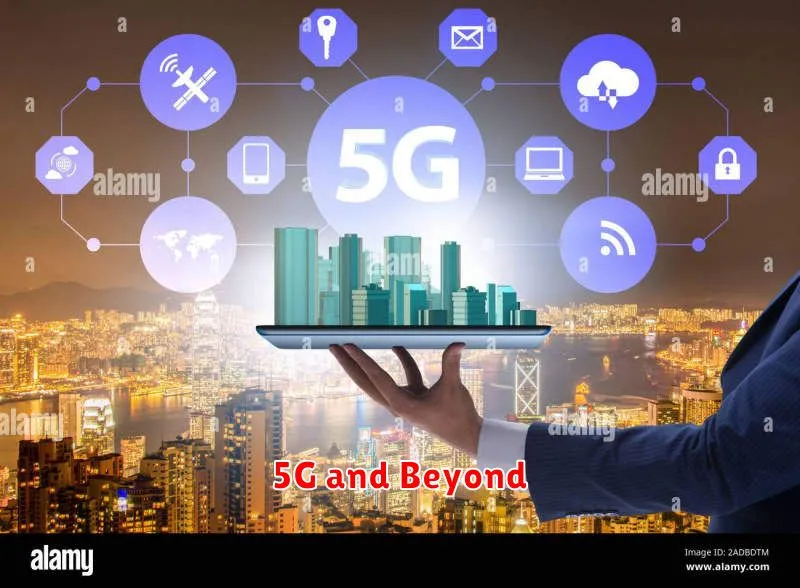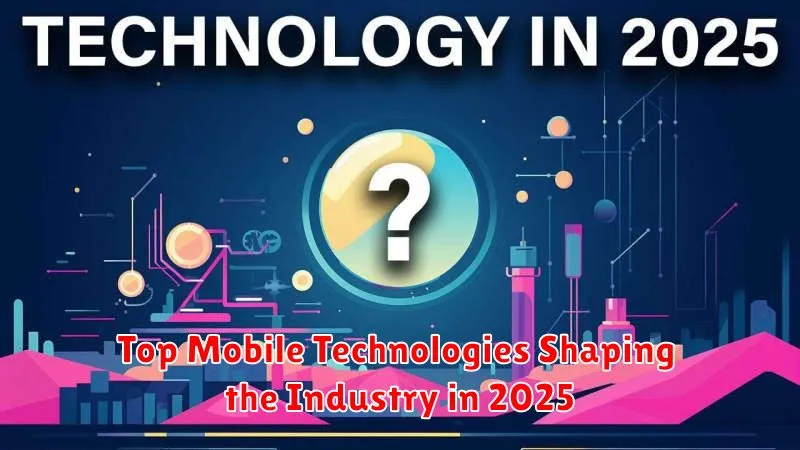The mobile technology landscape is constantly evolving, and 2025 promises to be a year of significant advancements. This article explores the top mobile technologies shaping the industry, from the continued rise of 5G and the transformative potential of extended reality (XR), encompassing virtual reality (VR) and augmented reality (AR), to the increasing sophistication of Artificial Intelligence (AI) and the growing importance of mobile security. Understanding these key trends is crucial for businesses, developers, and consumers alike to stay ahead of the curve and harness the power of mobile innovation.
From the Internet of Things (IoT) revolutionizing how we interact with our devices to the emergence of groundbreaking mobile app development frameworks, the future of mobile is rapidly unfolding. This article will delve into the leading mobile technologies set to redefine the industry in 2025, providing valuable insights into the trends that will shape the way we live, work, and connect in the years to come. Prepare to explore the dynamic world of mobile technology and discover the innovations driving its evolution.
5G and Beyond

While 5G continues to roll out and mature, providing faster speeds and lower latency, the industry is already looking ahead. Advancements in 5G, like standalone (SA) deployments, are unlocking its full potential, enabling new applications in areas like industrial automation and connected vehicles.
Beyond 5G, research and development are underway for 6G. This next generation promises significantly faster data rates, ultra-low latency, and improved reliability. While still in its early stages, 6G is expected to revolutionize areas such as extended reality (XR), holographic communications, and the Internet of Things (IoT) by the end of the decade.
Foldable Phones and Flexible Displays
Foldable phones have evolved from a niche curiosity to a significant presence in the mobile market. Flexibility and durability improvements in screen technology are key drivers of this trend. These advancements are opening up new possibilities for device design and user interaction.
With increasingly refined hinge mechanisms and more durable flexible displays, foldable phones offer expanded screen real estate without significantly increasing device size. This allows for enhanced multitasking capabilities and immersive experiences.
Beyond phones, the development of flexible displays extends to other devices like tablets and laptops. This trend suggests a future where rollable and foldable screens become increasingly common in consumer electronics.
AI Integration in Mobile Devices
Artificial intelligence is rapidly becoming a core component of mobile devices, driving enhanced user experiences and functionalities. On-device AI processing allows for faster and more personalized interactions, from improved camera capabilities and voice assistants to more efficient power management.
Key areas of integration include natural language processing for seamless communication, computer vision for augmented reality applications and image recognition, and machine learning for personalized recommendations and predictive functionalities. This integration is fueled by advancements in mobile hardware and software, making AI a crucial aspect of the future of mobile technology.
Biometric Enhancements
Biometric technology continues to evolve, offering increasingly sophisticated security measures for mobile devices. In 2025, expect to see enhanced facial recognition utilizing 3D mapping for improved accuracy and anti-spoofing capabilities. Under-display fingerprint sensors are also predicted to become more prevalent, providing a seamless user experience.
Beyond these common methods, innovation extends to vein pattern recognition and behavioral biometrics. These technologies analyze unique characteristics like how a user holds their phone or their typing rhythm, adding layers of security personalized to the individual.
Satellite Connectivity in Smartphones
Satellite connectivity is poised to become a defining feature in the next generation of smartphones. This technology allows devices to connect directly to satellites, bypassing the need for terrestrial cell towers. This is particularly crucial for users in remote areas or disaster-stricken regions where traditional cellular networks are unavailable.
This advancement offers significant advantages, including enhanced coverage, improved reliability during emergencies, and the potential for global connectivity. While currently limited to basic messaging services, future advancements promise higher bandwidths capable of supporting voice calls and even data transfer.
Several manufacturers have already integrated satellite connectivity into their devices, demonstrating the growing momentum of this transformative technology. Its integration into smartphones marks a significant step towards ubiquitous connectivity, regardless of location.
Wireless Charging Evolution
Wireless charging technology is poised for significant advancement by 2025. Faster charging speeds and improved efficiency are key areas of focus. This evolution is driven by the increasing demand for convenient and cable-free power delivery.
Beyond basic Qi charging, advancements like magnetic resonance and airfuel resonant technologies are expected to gain traction. These technologies offer the potential for charging multiple devices simultaneously and at greater distances.
This evolution will impact the design and functionality of various devices, influencing everything from smartphones and wearables to even electric vehicles, solidifying wireless charging as a core technology in the future.
eSIM and Dual eSIM Adoption
The rise of eSIM (embedded SIM) technology is significantly impacting the mobile industry. eSIMs eliminate the need for physical SIM cards, allowing users to activate cellular plans digitally. This simplifies the process of switching carriers and managing multiple numbers.
Dual eSIM functionality, enabling two active eSIM profiles simultaneously, is gaining traction. This allows users to have separate numbers for personal and business use on a single device, or to utilize different carriers for optimal coverage and data plans while traveling internationally.
Increased adoption of eSIM and dual eSIM technology is expected to continue into 2025, driven by the growing demand for flexible connectivity and the increasing prevalence of 5G-enabled devices that support this feature.
Device-to-Device Communication
Device-to-device (D2D) communication is poised to be a transformative technology by 2025. It allows direct communication between nearby mobile devices without relying on a central base station. This capability unlocks significant advantages, including reduced latency, improved spectrum utilization, and enhanced privacy for various applications.
Key areas where D2D will impact the mobile landscape include proximity services, content sharing, and IoT networking. Imagine seamless file transfers between devices, localized social networking, and efficient data distribution within smart homes or connected cars – all facilitated by D2D communication. Its ability to function even in network-congested areas or during network outages further bolsters its appeal.

